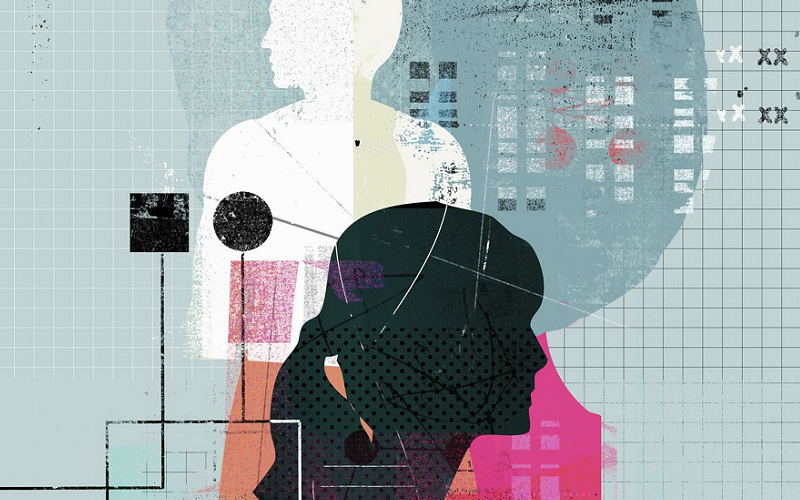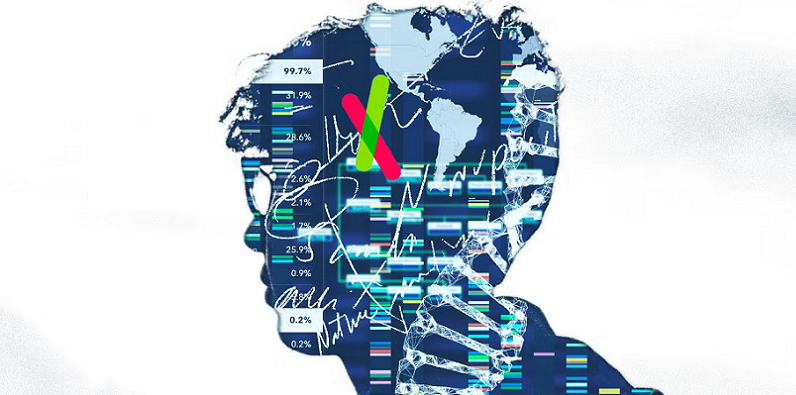
In the age of technological marvels, ancestry DNA testing stands out as a popular tool for uncovering our familial past and understanding our genetic heritage. Millions worldwide have swabbed their cheeks, sent off their samples, and eagerly awaited the revelations of their genetic roots. But how accurate are these DNA tests? Can Ancestry DNA actually be wrong? Here we dive deep into the world of genetic testing to explore its scientific foundations, the factors influencing its accuracy, and the real-life consequences when results don’t quite match expectations.
Contents
The Science Behind Ancestry DNA Testing
Ancestry DNA testing has captured the public’s imagination, offering a seemingly magical glimpse into our past. But the science that enables this fascinating journey is both complex and nuanced.
Basic Principles of Genetic Testing
Genetic testing for ancestry uses our DNA, the chemical database that carries instructions for the body’s functions and can tell the story of our lineage. DNA is inherited from our parents — half from our mother and half from our father. By examining specific segments of DNA, scientists can identify markers that are often associated with specific regions of the world or particular populations.
How DNA Samples Are Analyzed
The process begins when a sample, typically saliva or a cheek swab, is sent to a lab. There, technicians extract DNA and analyze it using various methods. One common technique is genotyping, which detects specific points in DNA that frequently differ between individuals. These points, known as Single Nucleotide Polymorphisms (SNPs), help to reveal an individual’s ethnic backgrounds and ancestral origins.
Common Types of Ancestry Tests
Ancestry tests come in several forms, each looking at different parts of the DNA and thus providing different types of information about one’s heritage.
Autosomal DNA Tests
This is the most common type of DNA test and examines autosomal chromosomes, which are inherited from both parents. It provides a broad view of an individual’s ethnicity and can connect them with relatives up to about 5-6 generations back. Both men and women can take this test, making it popular for general ancestry research.
Y-DNA Tests
Y-DNA tests analyze the Y chromosome, which is passed from father to son. This makes it useful for tracing paternal lineages and surnames back many generations. Only men can take this test, as women do not have a Y chromosome.
mtDNA Tests
Mitochondrial DNA (mtDNA) tests examine the DNA passed from mothers to their children. This test can trace maternal lineage back many generations, but since mtDNA changes very slowly over time, it is not as useful for recent genealogical connections [1].

Factors That Can Affect the Accuracy of DNA Results
While ancestry DNA tests provide insightful glimpses into our heritage, their accuracy is influenced by several key factors. Understanding these elements is crucial for interpreting the results correctly and setting realistic expectations about the information they can provide.
Genetic Recombination and Its Implications
Genetic recombination is a process that occurs during the formation of egg and sperm cells, where chromosomes pair up and exchange segments of DNA. This shuffling creates a unique set of genetic instructions in each offspring, different even among siblings. Due to recombination, the genetic information passed down through generations can vary significantly, complicating the detection of clear ancestral lines. This natural variability can lead to unexpected or misleading results in ancestry DNA testing.
Sampling and Population Reference Databases
The accuracy of DNA ancestry tests heavily depends on the reference populations against which a person’s DNA is compared. These databases are compiled from individuals with long-documented ancestries in specific regions.
Size and Diversity of the Database
A larger and more diverse database allows for more accurate and specific assessments of a person’s ancestry. If the database has limited samples from certain regions or populations, individuals from these areas may receive less accurate or detailed results. For example, people with African or Indigenous ancestry often find their results less specific due to underrepresentation in DNA databases [2].
Regional Specificity and Its Limitations
The specificity of regional data in the databases also affects accuracy. Some regions, like Europe, have highly detailed genetic information, allowing for precise ancestry estimates down to the country level. In contrast, other regions might be broadly categorized, such as “East Asian” or “Sub-Saharan African,” which can be too general for those seeking detailed ancestral information.
Laboratory Errors and Contamination
Despite stringent protocols, DNA sample processing is susceptible to human error and technical issues. Errors can occur during DNA extraction, sample preparation, or data analysis, leading to inaccurate or incomplete genetic profiles. Contamination of the sample, either from the environment or mishandling, can introduce foreign DNA, further complicating the results.
Case Studies: When Ancestry DNA Tests Get It Wrong
Ancestry DNA tests have provided many with valuable insights into their heritage, but there are instances where these tests have led to confusion or incorrect conclusions. Examining specific case studies where DNA tests have misinterpreted or miscalculated ancestry can help illustrate some of the pitfalls of relying solely on genetic data for understanding one’s background.
Misinterpreted Results Due to Similar Genetic Markers
Sometimes, DNA tests may misinterpret a person’s ethnic background because different populations can share genetic markers. For instance, genetic similarities between different European groups, such as those from Eastern Europe and Western Asia, can lead to an overestimation of one’s connections to one region over another. This overlap can confuse the algorithms that are supposed to pinpoint ancestry, resulting in misleading reports [3].
Errors in Parental and Ancestral Assignments
In some cases, DNA tests have incorrectly identified relationships between people. This can happen due to the random nature of genetic inheritance and the aforementioned issues with genetic recombination. For example, first cousins might be identified as half-siblings because they share a higher than average amount of DNA, common when their parents are closely related.
Case Study Examples and Analysis
Incorrect Ethnicity Estimates
One notable example involved a set of triplets who submitted their DNA to three different testing companies. Surprisingly, each company provided different ethnicity estimates for the triplets, despite their identical DNA. This case highlighted the variability in how different companies interpret genetic data and the potential inaccuracies in ethnicity estimation.
False Family Connections
Another case involved a woman who was unexpectedly linked to a father she never knew. Further investigation revealed that the supposed father had never actually submitted his DNA to the database; instead, his data had been mistakenly included from a research study. This error caused significant emotional distress and confusion, demonstrating the profound impact of such inaccuracies.
Ethical and Privacy Considerations in Genetic Testing
As the popularity of genetic testing for ancestry continues to grow, it is crucial to address the ethical and privacy concerns associated with it. The sensitive nature of DNA data poses unique challenges, highlighting the need for strict regulations and transparent practices.
Consent and Data Usage
The issue of consent is central to the ethics of genetic testing. Individuals must be fully informed about how their DNA will be used, stored, and shared before they agree to a test. This includes understanding who might have access to their genetic information and for what purposes. Genetic testing companies must adhere to high ethical standards, ensuring that they obtain explicit consent for any use of an individual’s DNA beyond the initial testing purposes.
Implications of Discovering Sensitive Family Information
DNA tests can reveal unexpected and sometimes unwelcome information about family relationships and health predispositions. Such revelations can have profound emotional and social impacts. For instance, discovering a non-paternity event or previously unknown siblings can lead to family disputes or identity crises. Testing companies and users must consider these possibilities and prepare for handling sensitive outcomes responsibly and with compassion [4].
The Debate Over Ownership and Control of Genetic Data
Who owns an individual’s genetic data is a contentious issue. While users might believe they retain ownership of their genetic information, some testing companies claim the right to use the data for research or even sell it to third parties. This raises significant privacy concerns and questions about the control individuals have over their own genetic information. Users need to be aware of these issues and actively choose services that respect their views on data ownership and privacy.

How to Interpret Ancestry DNA Results Correctly
Interpreting ancestry DNA results with accuracy and understanding is essential for anyone using genetic testing as a tool to explore their family history. Given the complexities and potential inaccuracies involved, it’s important to approach these results with a critical eye and a well-informed perspective.
Understanding Margins of Error and Confidence Intervals
DNA results often come with margins of error and confidence intervals that can significantly affect interpretation. These statistical measures indicate the reliability of the results—how likely they are to be accurate based on the data and methods used. For instance, an ethnicity estimate might come with a confidence interval of 50-65%, meaning there is some uncertainty about the exact percentage of that ethnicity. Users should pay close attention to these figures and consider them when evaluating the information provided by their DNA test.
The Importance of Cross-Referencing with Historical and Genealogical Records
To truly make sense of DNA results, it is crucial to cross-reference them with historical and genealogical records. DNA testing can provide clues about one’s ancestry, but these clues are best understood in the context of broader family history research. For example, if a DNA test indicates British ancestry, looking into historical migration patterns, family surnames, and documented family trees can provide more detailed insights and confirm or challenge the DNA findings.
Tips for Using DNA Results in Genealogical Research
Effectively incorporating DNA results into genealogical research requires a thoughtful approach. Here are some tips to help users make the most of their DNA testing experience:
Be Skeptical of Surprising Results: If the DNA results contain surprises, consider them as potential leads rather than definitive facts. Research further before drawing conclusions.
- Use Multiple Testing Companies: Different companies use different reference populations and algorithms, which can yield varying results. Testing with multiple companies can provide a more rounded view of one’s genetic makeup.
- Join DNA and Genealogy Forums: Participating in online forums and DNA project groups can provide additional insights and help from others who may have more experience or similar genetic backgrounds.
- Consult with a Professional: If the results are particularly complex or confusing, consulting with a genetic genealogist can provide professional interpretation and guidance tailored to individual circumstances.
References
[1] The limits of ancestry DNA tests, explained
[2] Can a DNA Test Be Wrong?
[3] I took 9 different DNA tests and here’s what I found
[4] How Accurate Are Online DNA Tests?

